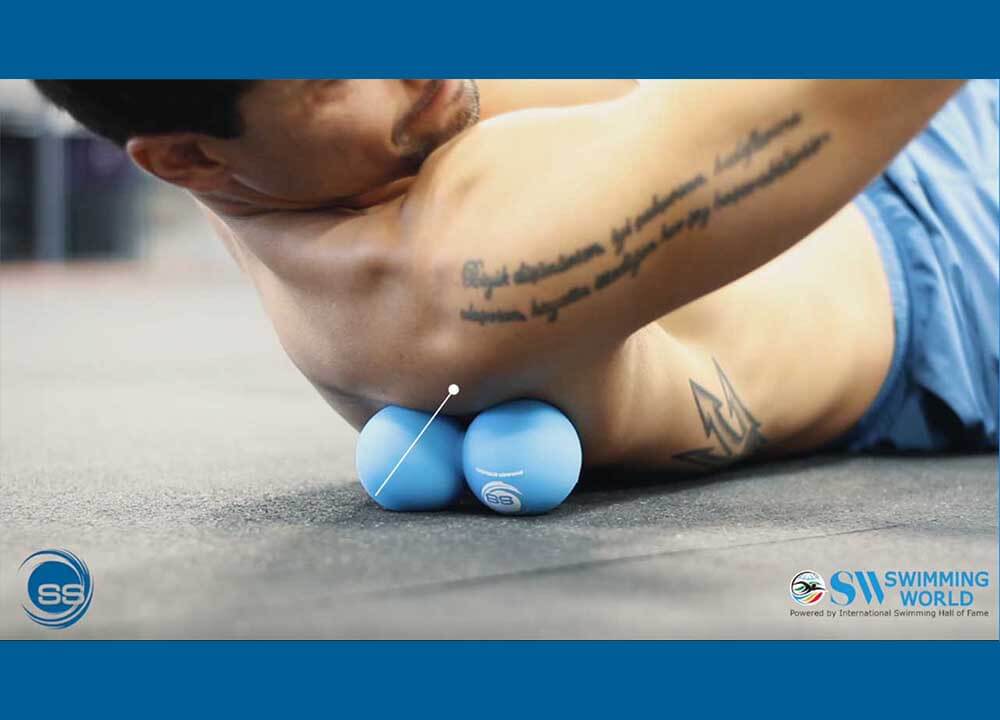Swimmer Strength Tech Tip: Shoulder Pain

Contributed by Deniz Hekmati – Strength & Conditioning Specialist, Sport Scientist
Let’s face it, swimming is considered to be one of the healthiest sports to do, but we can also see and argue that there are a high level of cases of shoulder pain. Some swimmers are only feeling pain while swimming and exercising, others are in actual pain in bed at night. There is no one definite answer, or immediate fix to these issues; however, I would argue that the majority of issues stems from weakness around the shoulder blades, in combination of muscles overworking to tighten up, causing them to pull on certain nerves around the shoulder joint and scapula, to then be perceived as pain. And when we are in pain, we are definitely not generating as much power as we potentially could.
Watch video
There are swimmers that are either hypermobile: they need to stabilize and learn how to engage important muscles. Or, swimmers are tight and has limited range of motion: they need to mobilize more, both with movement, with foam rolls, and mobility balls.
Most shoulder injuries are chronic, chronic meaning that injuries last for more than two weeks, but many of them can be fixed by proper dryland training, and self-myofascial release.
My tip is, learn how to properly use the shoulder blades. They are one of the most complex areas of the body, and most vital one for swimmers.
They protract.
They retract.
They elevate.
They depress.
They rotate upward and downward.
Swimmers are predominantly limited in the upward rotated position – strengthen the lower trapezius much more. This will improve the streamlines and make the butterfly recovery smoother.
Additionally, be sure that these muscles are functioning properly and able to help the shoulder blades in overhead positions – a key factor to master the streamline and butterfly.
If you’ve have pain for weeks with no signs of improvement – go see a physical therapist quickly. If you have a foam roll or mobility ball, target the posterior deltoid and teres minor muscles behind the shoulder. These guys tend to get very tense and pull on nerves. Pain is often felt in the front part of the shoulder as a little pinch. Additionally, the pectoralis minor muscle has been shown in research to be shorter in swimmers with shoulder pain – so stretch and also use the mobility tools to loosen the muscle. Lastly, the lower trapezius – get a peanut ball for peanut sit-ups and movements into streamline to feel the muscles contracting and engaging in the desired overhead position, then to relax.
The key to use these tools are to 1) be warmed up, and 2) to contract and relax. Movement is key, and they spots we feel the most tender, that where we need some extra love.
If you want your own Peanut – order your own Swimmer Strength ball at https://swimmerstrength-shop.com/ss-gear/
Next week, when is it appropriate to start adding more weight in the weight room?
Thanks for watching!
See more videos from Swimmer Strength Coach Deniz Hekmati:
Swimmer Strength Tech Tip: Abdominal Bracing
Swimmer Strength Tech Tip: Strength and Dryland Technique Matters
Swimmer Strength Tech Tip: Age to Start Dryland Training or Strength Training
Swimmer Strength Tech Tip: Squat Problems
Swimmer Strength Tech Tip: Performing the Squat
Swimmer Strength Tech Tip: Fixing the Squat by Improving Range of Motion
Swimmer Strength Tech Tip: McGill 3 Core Exercises
Swimmer Strength Tech Tip: Gripping
Free Trial of Online Training from Coach Hekmati
Get more info about Coach Hekmati or try his 10-day free online training: https://www.
Note: All swimming and dryland training and instruction should be performed under the supervision of a qualified coach or instructor, and in circumstances that ensure the safety of participants.



